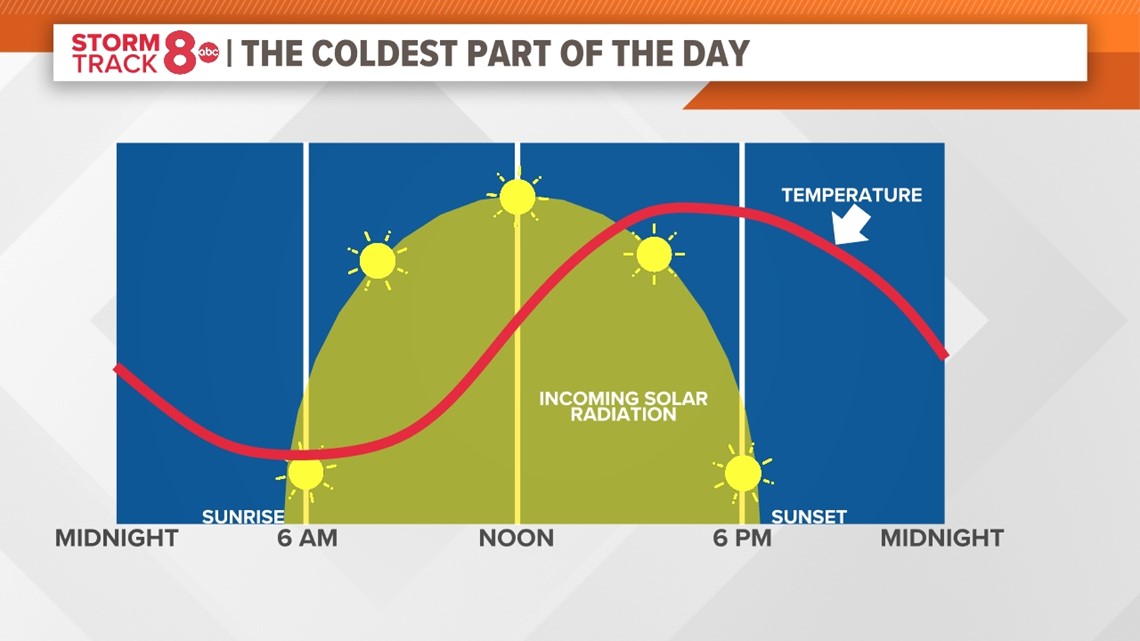MOLINE, Ill — We've talked a lot about the sun across many different Ask Andrew segments this year. After all, it is one of the main drivers of the climate we live in. This week we've got a great question from Cheryl in Rock Falls. She asks, "Why is the coldest part of the day in the morning?" Let's dig in!
Timing is everything
Believe it or not, the coldest part of an average day in the Quad Cities is just after sunrise. To pinpoint the cause, let's go back to the sunset the day before. Once the sun goes below the horizon, the ground begins radiating the heat it gained during the day into the lower atmosphere. This process is known as radiational cooling. That's why our temperatures start cooling down at night.
This process continues even past sunset because the sun has not yet reached a high enough angle to begin warming the ground and surrounding air. The lower the angle of the sun, the more energy gets distributed over a larger region. The higher the angle, the more direct that energy is when being sent to us here on the ground.


That's why in the graph above you can see that temperatures continue to fall past the time of sunrise, followed by a sharp rise toward the middle and later part of the morning as the sun angle increases.
Here are the average times of the coldest part of the day for different seasons in the Quad Cities:
Winter: 6-7 a.m.
Spring: 4-5 a.m.
Summer: 2-3 a.m.
Fall: 4-5 a.m.
The coolest part of the day tends to occur later in the morning during the winter months and earlier in the morning during the summer months. This happens because Earth receives more sunlight in the summer, which means the ground has more time to warm up before it starts to cool down at night.
Yes, there are some exceptions
The exact time of the coldest temperature can vary depending on a few factors, including cloud cover, humidity, and wind speed. Clouds tend to act as a blanket, keeping temperatures mild overnight. You'll typically see this during the winter months ahead of a strong area of low pressure. You could have high temperatures during the day in the 30s that warm into the 40s and 50s overnight with clouds and a strong south breeze.
Have a question that you would like me to answer for an upcoming Ask Andrew segment? Submit it, here!

